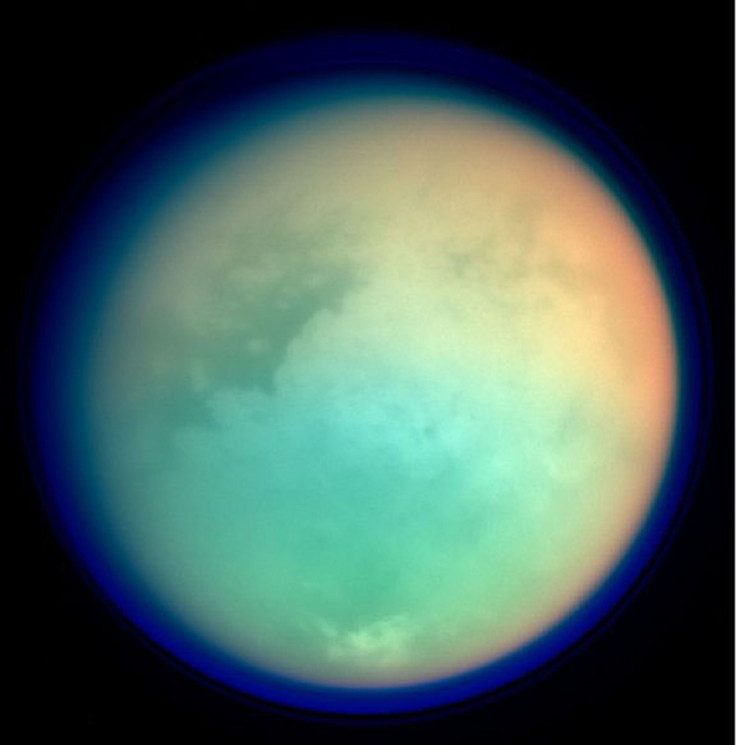Saturn Moon Titan Mystery: 'Phantom Lakes' And Caves May Explain 'Waterless Water Cycle'

Saturn moon Titan has something in common with Earth in that rains fall there. However, unlike our planet, it isn't water that falls from Titan's skies, it's liquid methane.
Scientists have been trying to figure out for years how exactly how this "waterless water cycle" happens on Saturn's natural satellite. Now, two new research recently published in the journal Nature Astronomy may have found an explanation behind Titan's strange weather.
While studying data from the Cassini mission, Shannon MacKenzie and her team found what appeared to have been three liquid-filled lakes. However, by the time the spacecraft returned to this area around seven Earth years later, the lakes appeared to have dried up, leading them to believe that the liquid had either evaporated or seeped into the surface.
The paper suggested that the "phantom lakes" were the result of seasonal changes on the moon.
While the observations may have been affected by the difference in instruments used by Cassini for the two observations, MacKenzie still believes that liquid had been present in the area and disappeared during the transition to winter to spring.
Meanwhile, the second research, led by Marco Mastrogiuseppe, a planetary scientist at Caltech, focused on the much larger lakes on Saturn's moon.
The second research team used Cassini data to determine the depth of some of Titan's lakes, some of which are 328 feet (100 meters) deep. Mastrogiuseppe and his colleagues also established that the lakes were mostly composed of liquid methane, similar to Titan's seas.
Mastrogiuseppe added that rain had gathered into these lakes, and the basins, in turn, "drain liquid." As for where the liquid is going exactly, the study suggested that there could be caves under Titan's surface, much like in Earth.
Scientists may soon find solid proof of the disappearing lakes and phantom caves if missions to Saturn's moon Titan will be approved in the future.
NASA is reportedly considering launching a mission called Dragonfly in 2025, which would see a drone landing on Titan's surface and exploring what scientists have called "the Earth of the outer solar system."
"At first blush, I think a lot of people think [Dragonfly] sounds like the literal meaning of incredible," Melissa Trainer, a deputy principal investigator with the mission and a scientist at NASA, told Space.com. "Not only is this an incredibly exciting concept with amazing, compelling science, but also, it is doable — it's feasible from an engineering standpoint."
© Copyright IBTimes 2024. All rights reserved.





















